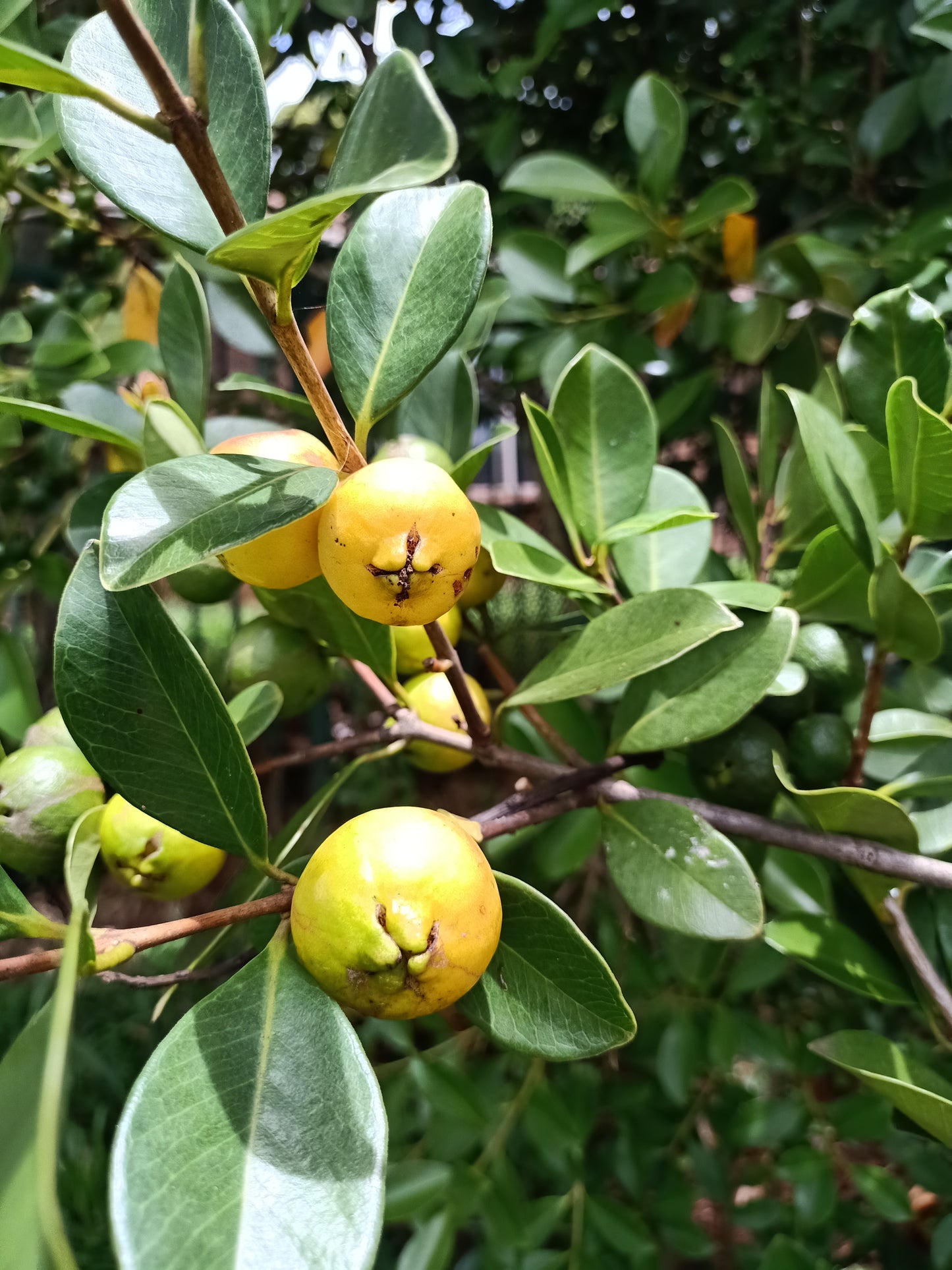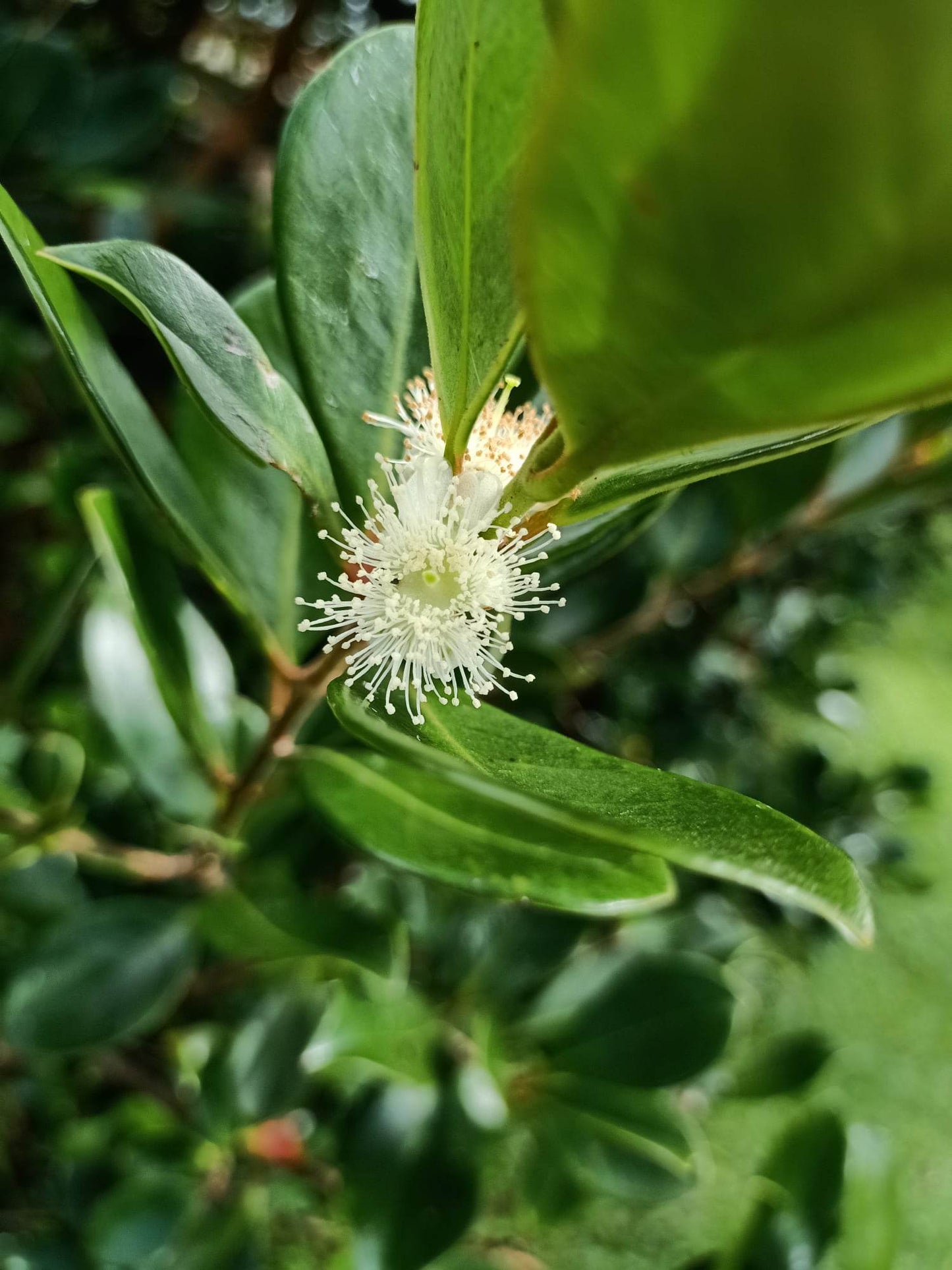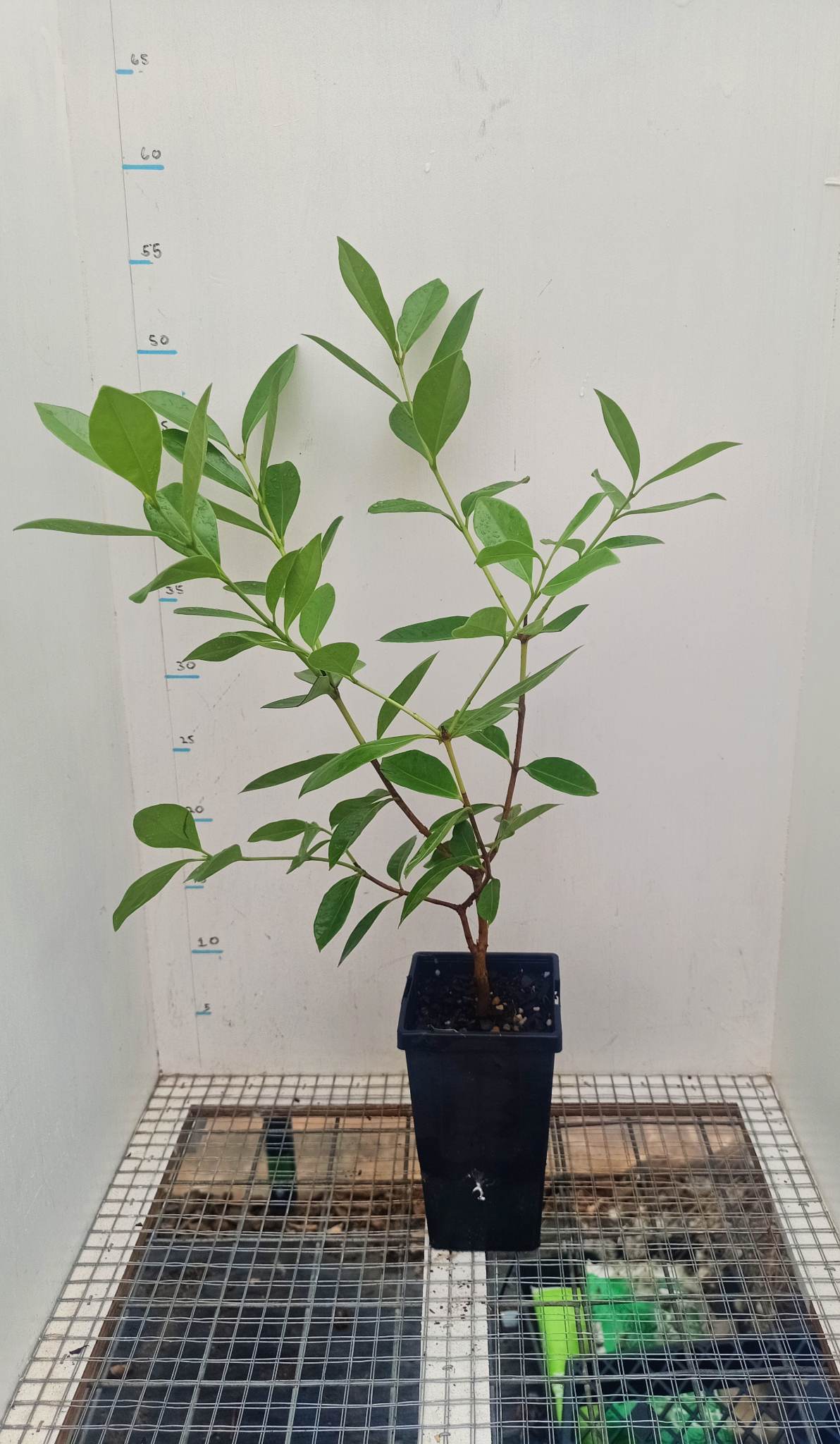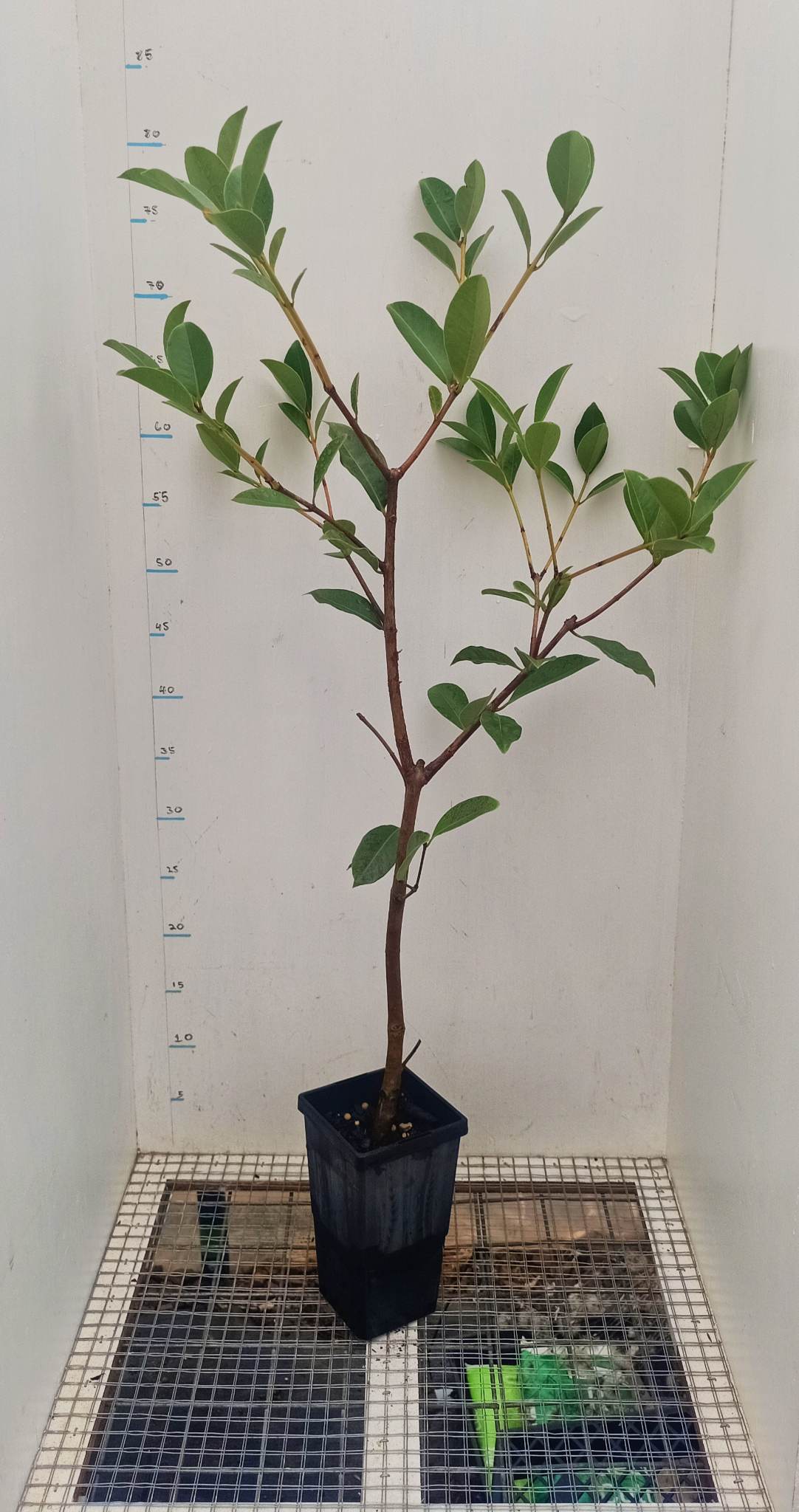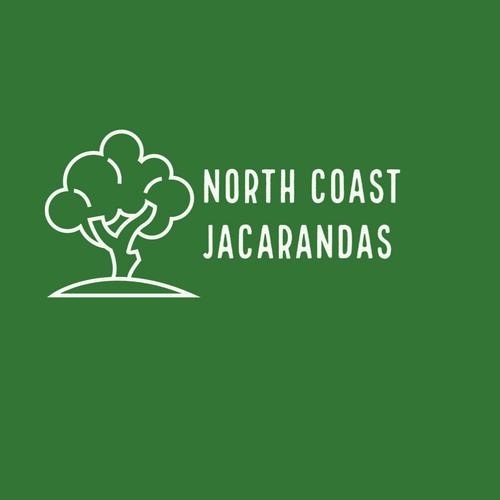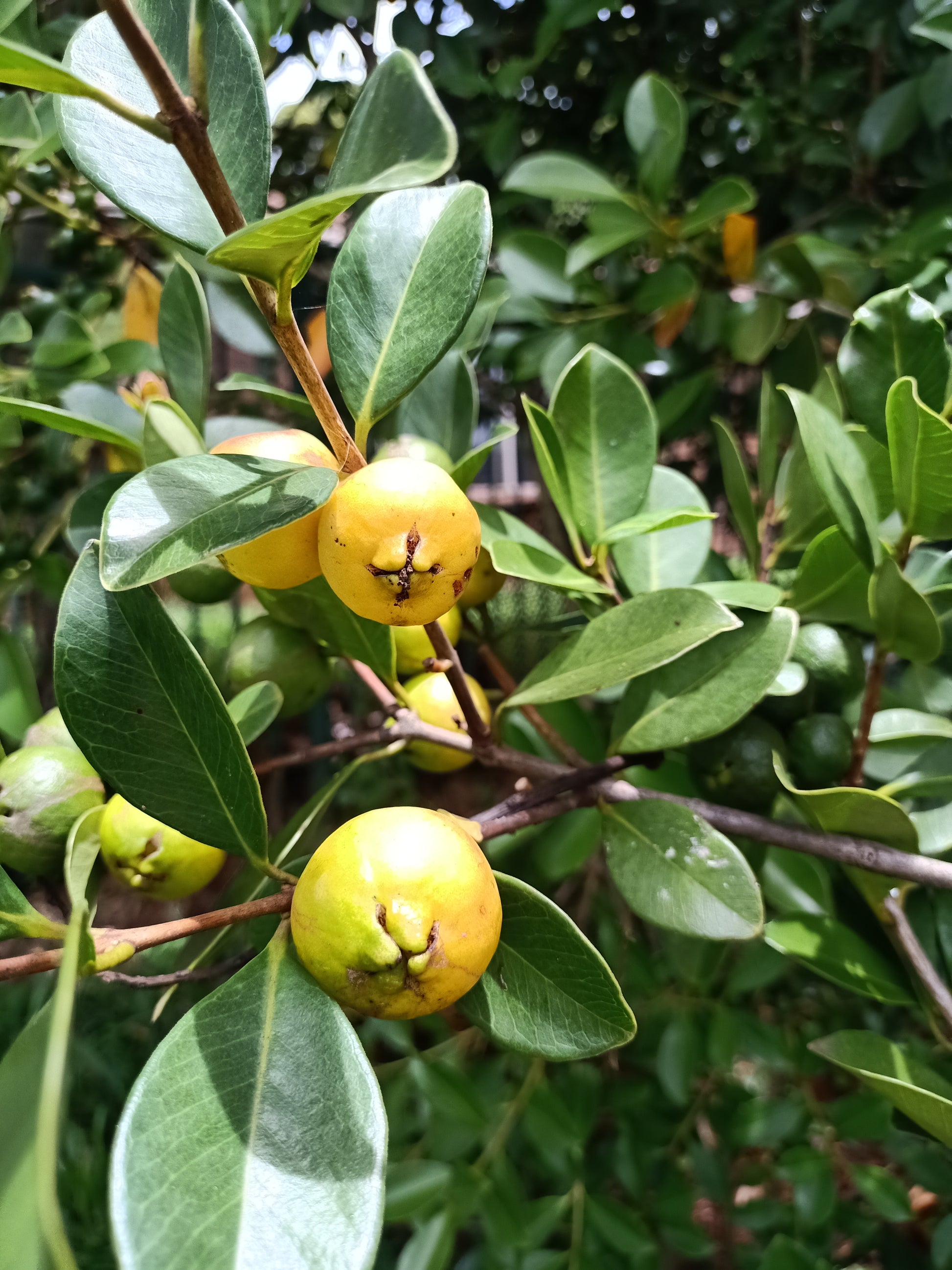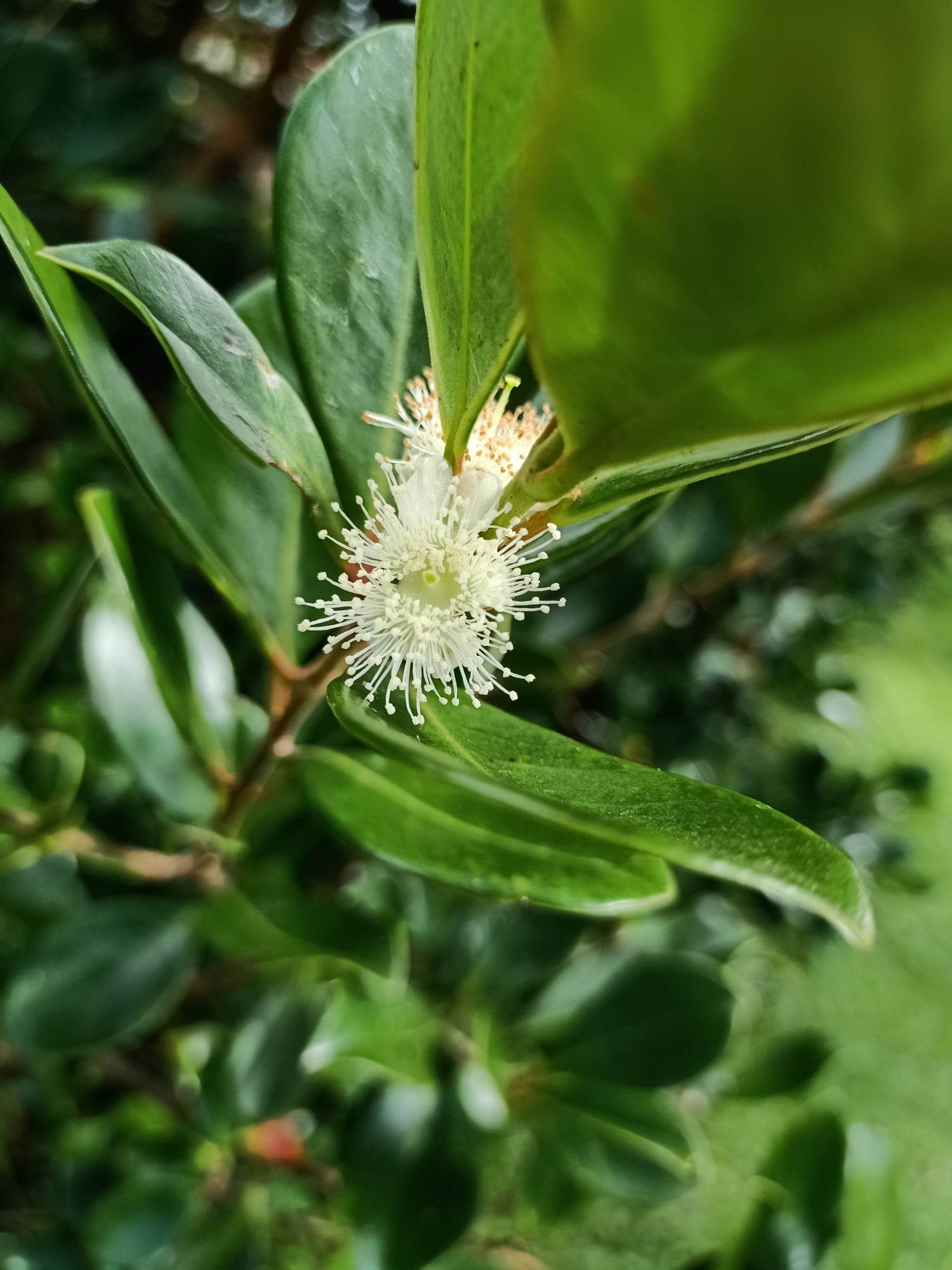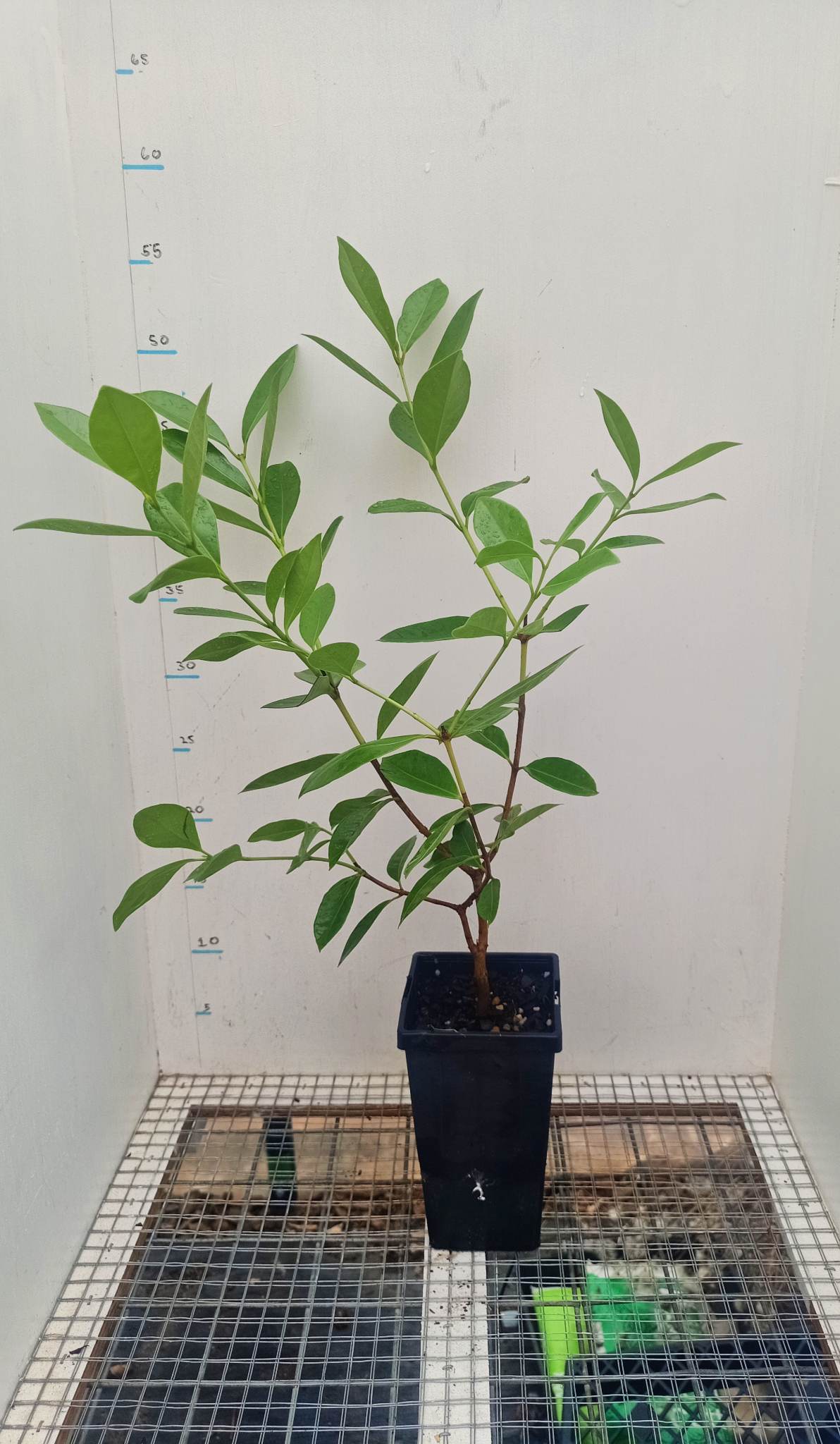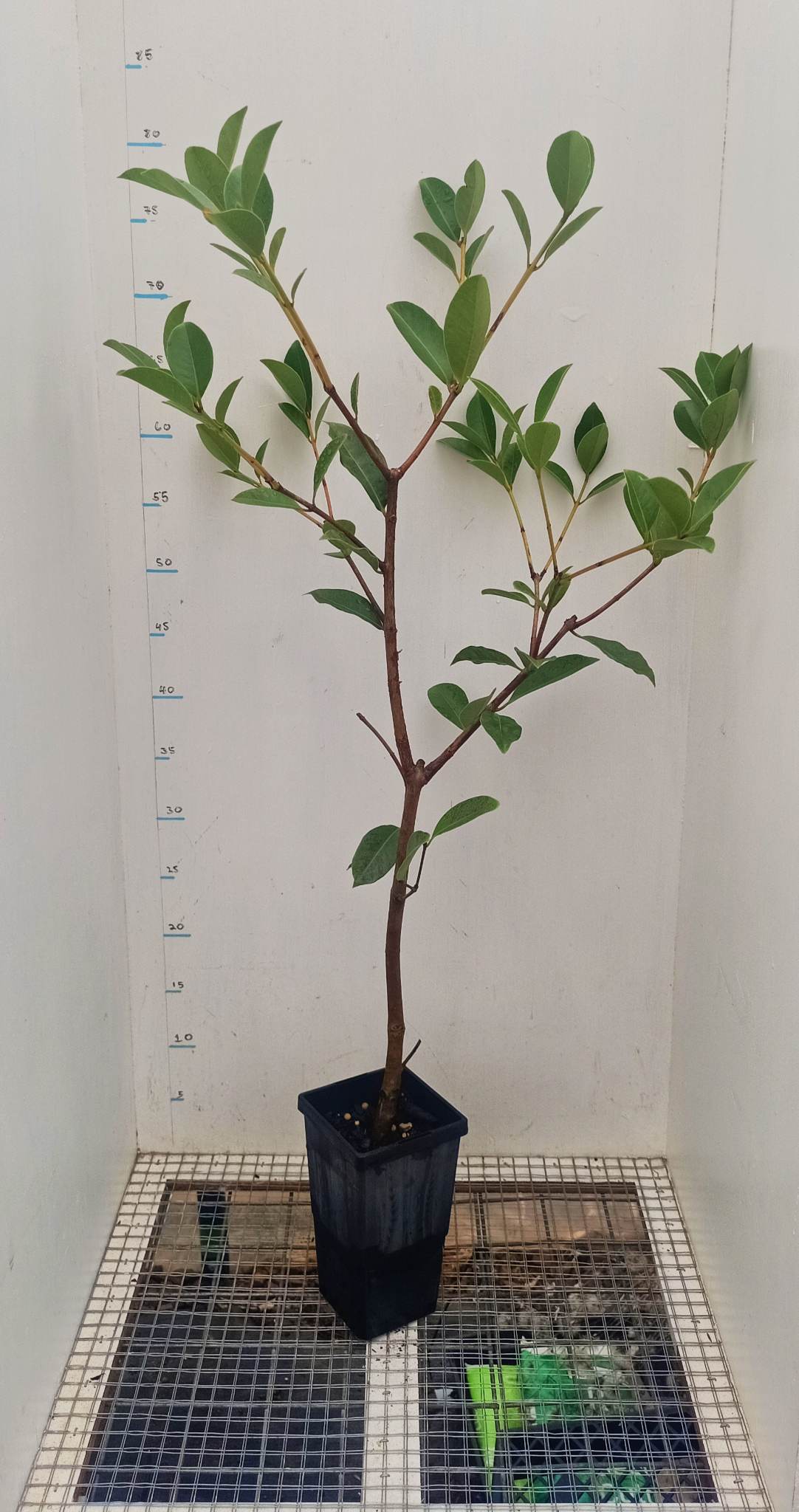North Coast Jacarandas
Lemon Guava/Yellow Cherry Guava Psidium littorale Free express shipping
Lemon Guava/Yellow Cherry Guava Psidium littorale Free express shipping
Couldn't load pickup availability
Botanical Name: Psidium littorale
Common Name: Lemon Guava, Cattley Guava, Yellow Cherry Guava
All Guavas are grown in 90x90x150mm pots
These trees are pruned regularly to encourage bushiness and kept around 60-80cm
Free Express shipping
The Lemon Guava is a tropical fruit tree that belongs to the Myrtaceae family. It is native to South America, but is widely cultivated in other parts of the world, including Southeast Asia and Hawaii. It is a small to medium-sized tree that can grow up to 3-6 meters in height, with a spread of 2-4 meters.
The tree has a dense canopy of glossy, dark green leaves, which are oval-shaped and about 5-10cm (2-4 inches) in length. The Lemon Guava produces fragrant, white flowers that are about 2cm (0.8 inches) in diameter, which develop into small, round fruit that are about the size of a golf ball.
The fruit of the Lemon Guava is typically green when unripe, and turns yellow when ripe. The flesh is creamy white with small seeds, and has a tangy, lemon-like flavor, which is where it gets its name. The fruit is rich in vitamin C, fiber, and antioxidants, and is used in a variety of culinary applications, including juices, jams, and desserts.
The Lemon Guava is relatively easy to grow and requires well-drained soil, regular watering, and full sun to partial shade. It is tolerant of a variety of soil types, including sandy, loamy, and clay soils, and can grow in areas with high humidity and rainfall.
In addition to its ornamental and culinary value, the Lemon Guava is also used in traditional medicine for its antibacterial and anti-inflammatory properties. The leaves and bark of the tree are used in teas, tinctures, and poultices to treat a variety of ailments, including diarrhea, coughs, and skin infections.
Due to box limitations and to ensure safe shipment, all trees available for purchase at North Coast Jacarandas may be subject to pruning before delivery. This process encourages the formation of new buds, facilitating the successful establishment of your tree upon arrival.